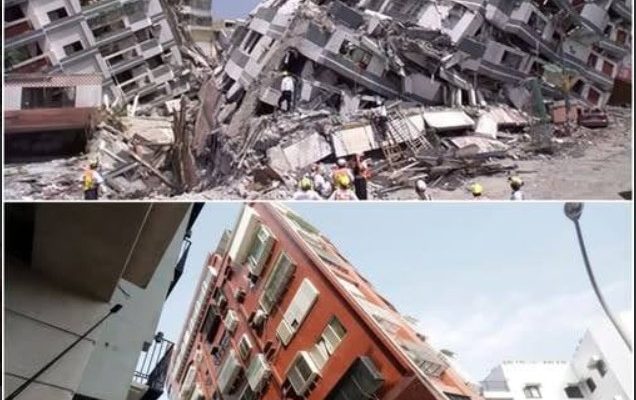Video 15 minute ago | Powerful 7.7 magnitude earthquake
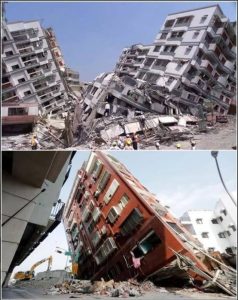
A Major Quake Sends Shockwaves Across the
Region
A powerful 7.7-magnitude earthquake struck central Myanmar on Friday, March 28, 2025, at around 1:20
p.m. local time, according to official geological monitoring agencies. The tremor, which originated near the
city of Monywa, was strong enough to be felt across multiple neighboring countries, including Vietnam,
Thailand, China, Laos, and India.
The seismic event was followed just 10 minutes later by another notable earthquake – this time a 6.4-
magnitude aftershock – approximately 20 kilometers away from the town of Kyaukse, also in Myanmar.
Epicenter Details and Depth
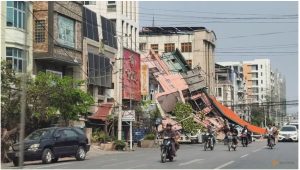
According to India’s National Center for Seismology, the epicenter of the primary 7.7-magnitude quake
was located at:
. Latitude: 21.93°N
. Longitude: 96.07°E
· Depth: 10 kilometers
. Region: Near Monywa, Central Myanmar
The shallow depth of the earthquake is a major factor in why the tremors were felt over such a wide area.
Widespread Tremors Across Southeast Asia

Vietnam Reports Shaking in Multiple Cities
In Vietnam, residents in Hanoi, Ho Chi Minh City, and several other urban areas reported feeling the
tremors, especially those living in high-rise apartment buildings. Many shared their experiences on social
media, describing the sensation as a swaying or rolling motion lasting several seconds.
Authorities confirmed that the earthquake was indeed felt in Vietnam, although no structural damage or
injuries have been reported at this time.
Tremors Felt in Bangkok and Other Regional Capitals
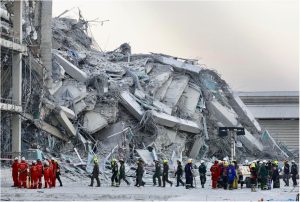
In Bangkok, Thailand, the tremors were noticeable enough to cause water to slosh out of swimming pools
– a common sign of medium to strong seismic activity in urban areas. Local news outlets also reported
that several office workers in tall buildings felt their workplaces shake briefly.
Similar reports came from parts of northern India, Laos, and southern China, where the ground
movement, while milder, was still perceptible to residents in multi-story structures.
No Casualties or Damage Reported So Far
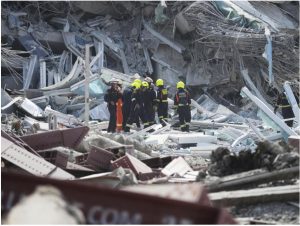
As of this writing, no casualties or significant infrastructure damage have been reported in Myanmar or
any of the affected neighboring countries. However, officials are continuing to monitor the situation, and
aftershocks remain a possibility in the hours and days following such a large seismic event.
Emergency Response and Preparedness
Seismological experts emphasize that while the quake did not cause immediate destruction, the situation
is still developing. Local authorities in Myanmar and surrounding nations have urged citizens to remain
alert, especially in areas prone to landslides or older buildings that may not be earthquake-resistant.
The United States Geological Survey (USGS) and local seismology institutes across the region are closely
tracking aftershock patterns and potential secondary hazards.
Context: Recent Seismic Activity in the Region
Southeast Asia lies within a geologically active zone where tectonic plates frequently shift, causing
earthquakes of varying magnitudes. The region has experienced a series of smaller quakes in recent
months, though none on the scale of today’s 7.7-magnitude event.
In February 2025, a smaller 2.6-magnitude earthquake was recorded in Chuong My District on the
outskirts of Hanoi, Vietnam. While minor, the incident served as a reminder of the need for ongoing
earthquake preparedness, even in areas not traditionally seen as high-risk zones.
Understanding the Richter Scale and Earthquake
Magnitude
The Richter scale, though now often replaced by the moment magnitude scale (Mw) in professional
reporting, remains widely referenced. A 7.7-magnitude earthquake is considered major, capable of
causing serious damage if centered near populated areas.
For context:
. 2.0-2.9: Minor, often not felt
. 3.0-3.9: Often felt, rarely causes damage
· 5.0-5.9: Moderate, some damage possible
· 6.0-6.9: Strong, capable of significant damage
. 7.0 and above: Major to great, with the potential for widespread destruction
The depth of the quake also influences how far it can be felt. The shallower the earthquake, the more
intense the surface shaking tends to be.
Safety Guidelines During Earthquakes
Authorities across the region have reminded residents of essential safety steps to follow during and after
an earthquake:
. If indoors: Drop to the ground, take cover under sturdy furniture, and hold on until the shaking
stops
. If outdoors: Move away from buildings, streetlights, and utility wires
. After the quake: Check for gas leaks, structural damage, and stay informed through official
updates
Preparedness kits, evacuation plans, and knowing how to shut off utilities can all be lifesaving in the
aftermath of a major quake.
Conclusion: A Wake-Up Call for Regional
Preparedness
The 7.7-magnitude earthquake that struck Myanmar on March 28 serves as a powerful reminder of the
seismic vulnerability of Southeast Asia. While the region avoided immediate disaster this time, the wide-
reaching tremors – from Myanmar to Vietnam – highlight the need for better public awareness,
emergency readiness, and infrastructure resilience.
As officials continue to monitor the situation and assess any long-term impacts, citizens are encouraged to
remain vigilant and stay informed through credible sources.
